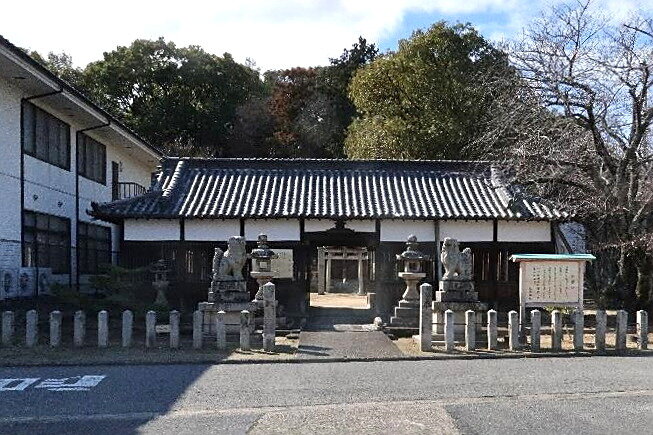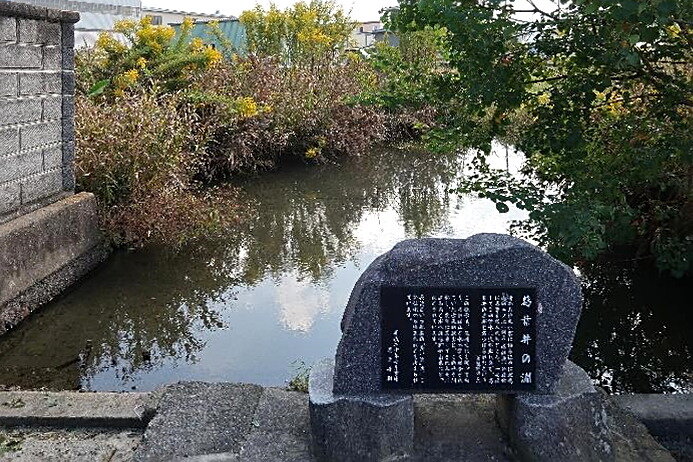2024.07.01
Additional Recognition of Cultural Properties Comprising the Japan Heritage: "Villages depicted in Tabihikitsuke and two paintings―Landscape of Hinenosho, a manor in medieval Japan"
1."Villages depicted in Tabihikitsuke and two paintings - Landscape of Hinenosho, a manor in medieval Japan"
Recognized as a Japan Heritage in 2019, "Villages depicted in Tabihikitsuke and two paintings - Landscape of Hinenosho, a manor in medieval Japan" has recently added the following two cultural heritage sites to its story.
FUNAOKAYAMA

Designation Status: Not Designated (Historic Site)
This is a solitary peak with an elevation of 25.5 meters, located within the precincts of Funaoka Shrine in the Okamoto area as described in the manor paintings. Documents detailing the origins of Hine Shrine, the guardian shrine of HinenoSho, show a deep connection with Funaokayama. The site is associated with events such as the Mikoshi (Portable Shinto shrine) procession and Nobori (Japanese type of banner) processions during the Hine Jinja Shrine Makura (Pillow) Festival.
KUZUHAINOFUCHI

Designation Status: Not Designated (Historic Site)
Situated between Nagataki and Kaminogo, this is a flood basin with a water surface area of about 0.9 acres and a depth of approximately 1 meter. Since ancient times, it has been a source of fresh spring water, irrigating about 6 hectares of rice fields, serving as a medieval irrigation reservoir.
According to legend, a piece of kudzu (Japanese arrowroot) thrown from the Tonotaki (Waterfall) of Shipporyuji Temple in Inunakisan flowed to this pool. This story is said to be the origin of the name "Nagataki." This account was transcribed by Kujo Masamoto in "Masamoto-ko Tabihikitsuke" and preserved in the Kujo family archives.
These cultural assets appear in the "Tabihikitsuke" (travel records) and the two manor paintings ( "Painting of Wilderness Cultivation in Hineno Village, Hinenosho, Izumi Province" & "Painting of Wilderness Cultivation in Hineno Village and Ihara Village, Hinenosho, Izumi Province") and remain deeply rooted in the lives of local residents today. They have been newly recognized as vital to enriching the Japan Heritage story.
2. Japan Heritage
2-1.What is Japan Heritage?
Japan Heritage is a designation by the Agency for Cultural Affairs that tells the story of Japan's culture and traditions through the historical charm and unique characteristics of a region.
By comprehensively developing, utilizing, and strategically promoting the group of fascinating cultural properties essential to the story, led by the region itself, Japan Heritage aims to revitalize local communities both domestically and internationally.
2-2.Overview of "Villages depicted in Tabihikitsuke and two paintings - Landscape of Hinenosho, a manor in medieval Japan"
About 800 years ago, Izumisano City was the estate of the Kujo family, a high-ranking aristocratic household. Two manor paintings and a diary titled "Tabihikitsuke" written by Kujo Masamoto remain to this day. The paintings depict a verdant landscape featuring reservoirs and waterways that provided water to the fields, as well as shrines and temples. The diary vividly describes the lives and activities of the villagers 500 years ago. The landscape passed down from medieval times to the present day continues to invite us to an enchanting rural scenery as illustrated in the paintings and diary.
3.Japan Heritage Sites in Izumisano City
3-1. Recognized in 2019
"Villages depicted in Tabihikitsuke and two paintings - Landscape of Hinenosho, a manor in medieval Japan"
Type: Local
Scope: Izumisano City only
3-2. Added in 2020
"An Extraordinary World Woven by Men Who Braved the Rough Seas - Ports of Call and Shipowners' Villages of the Kitamae-Bune" (Recognized in 2015)
Type: Serial
Scope: Izumisano City and 51 other municipalities
3-3. Recognized in 2020
"The Birthplace of Shugendo - Protected and Passed Down by the Villagers"
Type: Serial
Scope: Izumisano City and 22 municipalities across 3 prefectures






